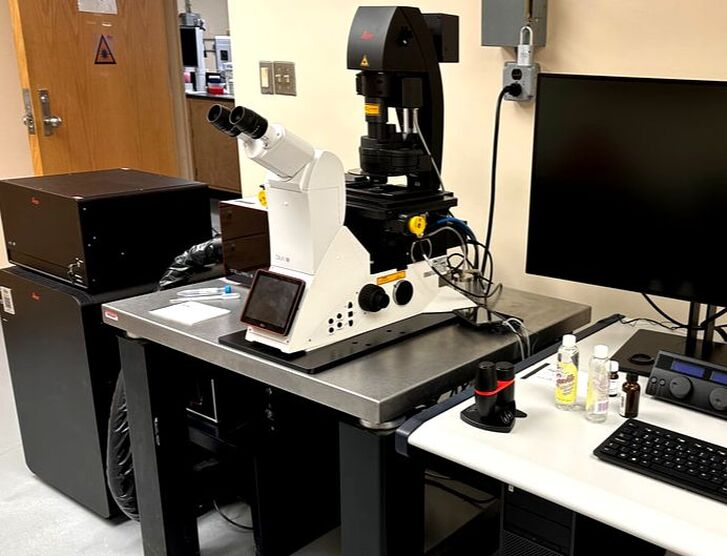Leica Stellaris 8 FALCON Laser Scanning Confocal - New 6/30/23
|
New Users
Note: the NIH requires that all publications containing data collected on the Leica Stellaris 8, including press releases, acknowledge NIH grant support with a disclaimer such as the following: Purchase of the Leica Stellaris 8 FALCON was supported by Award Number 1S10ODO34260 from the National Institute of Health.
Faculty and students who wish to use the microscope should follow the instructions in the New Users Guide. Training takes ~2 to 3 hrs, with additional mandatory follow-up sessions required until the director determines the user is capable of operating the microscope independently. Users are encouraged to bring their own samples to the training session. If none are available, prepared slides will be used.
Faculty and students who wish to use the microscope should follow the instructions in the New Users Guide. Training takes ~2 to 3 hrs, with additional mandatory follow-up sessions required until the director determines the user is capable of operating the microscope independently. Users are encouraged to bring their own samples to the training session. If none are available, prepared slides will be used.
Policy
The microscope is available to trained users on an equal basis. Individual users may reserve one four hour block of time during "peak" daytime hours, and an additional 6 "off-peak" hours (all other times). Investigators performing live cell imaging experiments may signup for 12 hours blocks of time after 6pm.
For a comprehensive list of policies (including BSL-2 protocols), please see the Facility SOP.
For a comprehensive list of policies (including BSL-2 protocols), please see the Facility SOP.
Rates
The rate schedule applies to all users and is current for the 2023/2024 academic year. Fees are used to help cover the cost of the service contract on the microscope, which is partially subsidized by the department, and to help pay for materials such as lens paper, lens cleaning solution and mercury bulbs.
System Specifications
|
References
References:
- Policy
- Leica LAS X Offline Software Download
- Video on How To Install LAS X software
- Leica workshop video on Phasor Analysis with LAS X
- Old software download: Leica Lite 2.4.1 Software (64-bit Windows)
- Leica FLIM Guide
Contact Us
|
Dr. Charles Delwiche
Faculty Supervisor [email protected] 301.405.8286 2108 Bioscience Research Building |

